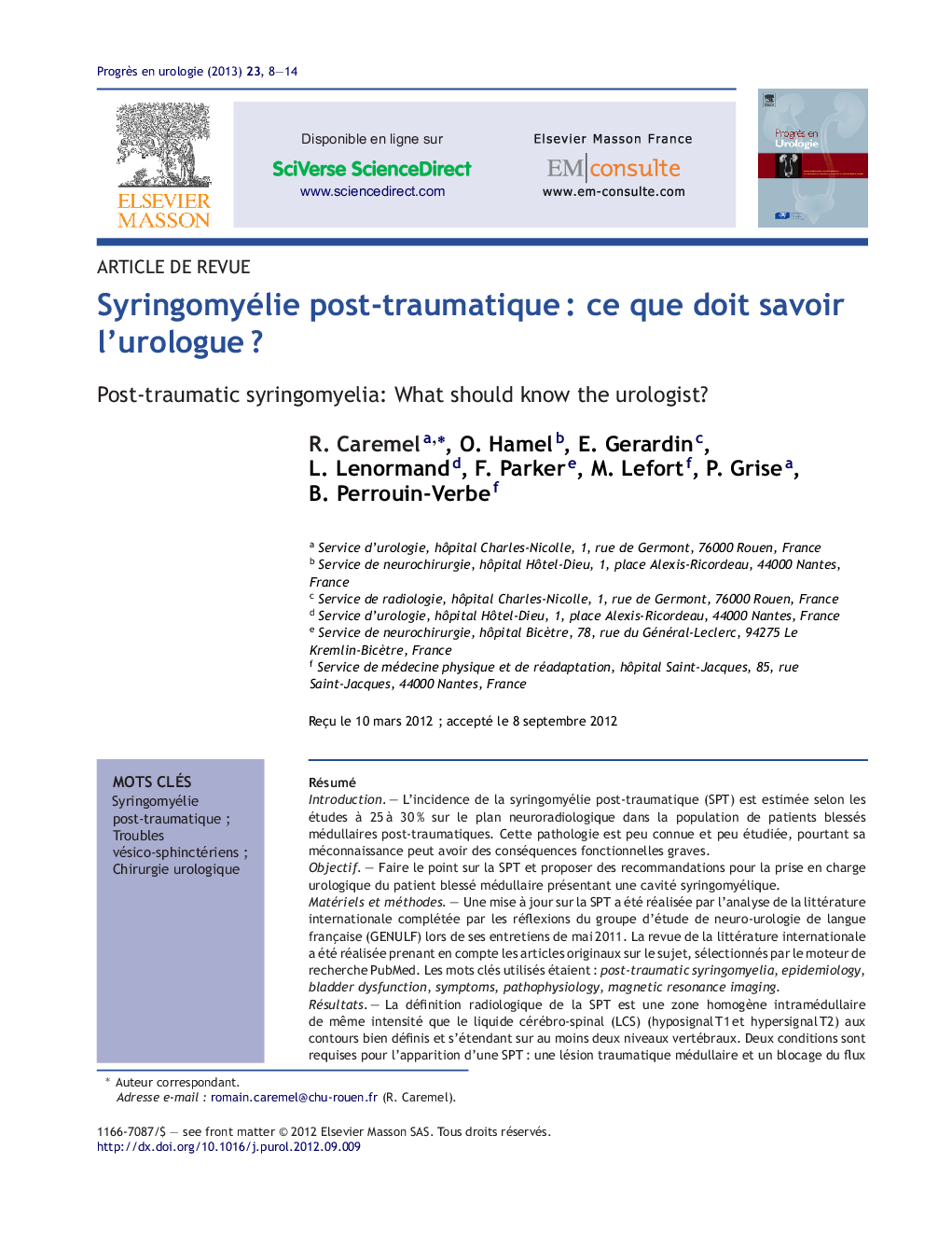| کد مقاله | کد نشریه | سال انتشار | مقاله انگلیسی | نسخه تمام متن |
|---|---|---|---|---|
| 3826744 | 1246897 | 2013 | 7 صفحه PDF | دانلود رایگان |
عنوان انگلیسی مقاله ISI
Syringomyélie post-traumatique : ce que doit savoir l'urologue ?
دانلود مقاله + سفارش ترجمه
دانلود مقاله ISI انگلیسی
رایگان برای ایرانیان
کلمات کلیدی
موضوعات مرتبط
علوم پزشکی و سلامت
پزشکی و دندانپزشکی
پزشکی و دندانپزشکی (عمومی)
پیش نمایش صفحه اول مقاله

چکیده انگلیسی
The incidence of post-traumatic syringomyelia (PTS) is estimated according to recent studies at 25 to 30% of patients with traumatic spinal cord injuries in magnetic resonance imaging (MRI), which remains the gold standard exam for syringomyelia diagnosis and monitoring. Syringomyelia is translated by an increased cord signal (similar to CSF) with low-density T1-weighted image and high-density T2-weighted image, which extends beyond site of initial lesion at least to two vertebral segments. Two conditions are required for development of PTS: traumatic spinal cord injury and blocked the flow of CSF epidural. The mean interval from spinal cord injury to diagnosis SPT was 2.8Â years (range, 3Â months to 34Â years). The commonest symptoms are pain and sensory loss. PTS should be suspected if the patient has new neurological symptoms above level of injury, such as dissociated sensory injuries, reflexes abolition, and motor deficit, after the neural function becomes stable for certain time. In urologic practice, new neurological symptoms could be bladder and/or erectile dysfunction. The medical management based on prevention efforts with closed-glottis pushing, which could aggravate the syrinx cavity. In urology, extracorporeal shockwave lithotripsy, and laparoscopic or robotic surgery could extend the syrinx cavity for the same reason (increase abdominal pressure). The indications for surgical intervention and optimal surgical treatment technique for patients with PTS are not consensual. The literature demonstrated that surgery PTS is effective at arresting or improving motor deterioration, but not sensory dysfunction or pain syndromes.
ناشر
Database: Elsevier - ScienceDirect (ساینس دایرکت)
Journal: Progrès en Urologie - Volume 23, Issue 1, January 2013, Pages 8-14
Journal: Progrès en Urologie - Volume 23, Issue 1, January 2013, Pages 8-14
نویسندگان
R. Caremel, O. Hamel, E. Gerardin, L. Lenormand, F. Parker, M. Lefort, P. Grise, B. Perrouin-Verbe,